Understanding DGCA's Flight Duty Time and Flight Time Limitations(For Cabin Crew)

In this blog post, we aim to provide a simplified representation of the DGCA's Flight Duty Time and Flight Time Limitations - Cabin Crew Issue IV, effective from 1st November 2018. Our goal is to help cabin crew members understand how these regulations work and make them aware of their rights and responsibilities. Please note that this information is based on the DGCA regulations as of August 3rd, 2018. Let's dive into the key points
Introduction
The Annex 6, Operation of Aircraft, Part I, to the Convention on International Civil Aviation, mandates that Contracting States establish regulations that define the limits for Flight Time, Flight Duty Period, Duty Period, and Rest Period for Cabin Crew.
Cabin Crew members are individuals who perform duties in the interest of passenger safety, as well as duties assigned by the aircraft operator and the pilot-in-command, but they do not serve as flight crew members.
With the aim of enhancing operational safety and utilizing the authority granted under Rule 42A of the Aircraft Rules, 1937, in conjunction with Rule 133A of the Aircraft Rules, 1937, the following Flight Duty Time and Flight Time Limitations for Cabin Crew are being issued for the information, guidance, and compliance of all relevant parties.
This Civil Aviation Requirement (CAR) supersedes all previous communications, letters, and instructions issued by the Directorate General of Civil Aviation (DGCA) pertaining to Cabin Crew Flight Duty Time Limitations (FDTL).
Applicability
This CAR prescribes the Maximum Limits of Flight Time, Flight Duty Period, Duty Period and Minimum Rest Period applicable to all cabin crew of Scheduled, Non- Scheduled and Scheduled Commuter Air Transport Services.
Some Definitions
Duty: Any task that cabin crew members are required by the operator to perform, including, for example, flight duty, administrative work, training, positioning and standby when it is likely to induce fatigue.
Duty Period: A period which starts when a cabin crew member is required by an operator to report for, or to commence a duty and ends when that person is free from all duties.
Note:Standard allowance shall be added at the end of flight time to allow for completion of checks.
- 15 minutes for Non-Scheduled Operator and Schedule Commuter Air Transport Services.
- 30 minutes for Scheduled Air Transport Services.
- 60 minutes in case of International Operations where the cabin crew are required to undertake post flight medical examination.
Note: Duty Period includes Flight Duty Period.
Flight Duty Period: A period, which is intended to cover continuous period of duty that always includes a flight or series of flight for a cabin crew member. It commences when a cabin crew member is required to report for duty and finishes when aeroplane finally comes to rest and the engines are shut down at the end of the last flight on which he/she is a cabin crew member. (Chocks on plus 15 minutes for non- schedule /scheduled commuter air transport services and 30 minutes for scheduled air transport services)
Note: Each operator shall prescribe in their operations manual the reporting time for cabin crew before the scheduled departure of the flight, while taking into consideration the time required for the pre-flight briefing, medical and other administrative functions required for operating a flight.
Flight Time: The total time from the moment an aeroplane first moves for the purpose of taking off until the moment it finally comes to rest at the end of the flight.
Note: “Flight time” is defined as synonymous with the term “block-to-block” time or “chocks-to-chocks” time in general usage, which is measured from the time an aeroplane first moves for the purpose of take-off until it finally stops at the end of the flight.
Fatigue: A physiological state of reduced mental or physical performance capability resulting from sleep loss or extended wakefulness, circadian phase, or workload (mental and/or physical activity) that can impair a crew member’s alertness and ability to safely operate an aircraft or perform safety related duties.
Home Base: The location nominated by the operator, having high degree of permanence from which the crew member normally starts and ends a flight duty or a series of flight duty periods.
Local Night: A period of eight hours falling between 2200 hours and 0800 hours’ local time.Note: The operators shall define eight hours of local night to cater for seasonal schedules.
Positioning: The transferring of a non-operating cabin crew member from place to place at the behest of the operator.
Reporting Time: The time at which cabin crew member is required by an operator to report for duty.
Rest Period: A continuous, uninterrupted and defined period of time, subsequent to or prior to duty, during which a cabin crew member is free from all duties, standby and reserve.
Reserve: A period of time during which a cabin crew member is required by the operator to be available to receive assignment for Flight Duty Period, positioning or other duty notified at least 10 hours in advance.
Roster: A list provided by an operator of the times when a cabin crew member is required to undertake duties.
Note: “Roster” as here defined is synonymous with “Schedule”, “Line of Time”,“Pattern”, and “Rotation”.
Split Duty (Break): A period free of all duties, which counts as duty, being less than a rest period.
Standby: It is a defined period of time during which a cabin crew member is required by the operator to be available to receive an assignment for a specific duty without an intervening rest period.
Unforeseen Operational Circumstance: An unplanned event, such as unforeseen weather, natural calamity, medical emergency, national requirement for relief and rescue operations (mission oriented), equipment malfunction, runway closure, passenger and aircraft recovery, etc. that is beyond the control of the operator.
Ultra Long Range(ULR) Operations: Continuous non-stop flights between a specific city pair involving any sector having a flight time of over 14 hours and duty periods from 18 hours upto 22 hours at any time during a calendar year taking into account the mean and seasonal wind changes.The ULR operations apply to both sectors of a city pair.
Window of Circadian Low(WOCL): WOCL is best estimated by the hours between 02:00 and 05:59 for individuals adapted to a usual day-wake/night sleep schedule. This estimate of the window is calculated from scientific data on the circadian low of performance, alertness, subject report (i.e. peak fatigue) and body temperature.
- For flight duty periods that cross 3 or fewer time zones, the window of circadian low is estimated to be 02:00 to 05:59 home-base/ domicile time.
- For flight duty periods beyond 3 or more time zones, the window of circadian low is estimated to be 02:00 to 05:59 home-base/ domicile time for the first 48 hours only.
- For a cabin crew member remaining more than 48 hours away from home-base/ domicile time, the window of circadian low is estimated to be 02:00 to 05:59 referred to local time at the point of departure.
Operator's Responsibility
Every operator shall establish a scheme for complying with the limitations for flight time, flight duty periods, duty periods and rest periods specified in this CAR in respect of cabin crew members.
- The FDTL scheme shall be submitted to DGCA for approval. The approved scheme shall form part of the Operator’s Operations Manual.
- The operator shall not require a cabin crew member to perform cabin crew duties on a flight if it is known or suspected that the cabin crew member is fatigued to the extent that the safety of flight may be adversely affected.
- No operator may schedule any cabin crew-member and no cabin crew member may accept an assignment, which shall exceed the prescribed limitation.
Responsibility of Cabin Crew Member
- Cabin crew members shall make best use of facilities and opportunities that are available or provided for rest and for the consumption of meals, and shall plan and use rest periods to ensure that they are fully rested.
- A cabin crew member shall not perform cabin crew duties on a flight if it is known or suspected that the cabin crew member is fatigued to the extent that the safety of flight may be adversely affected.
Maximum Cumulative Flight Time Limitations, Landing During Any 24 Hours
The maximum flight time and maximum flight duty period are indicated in the following Table.
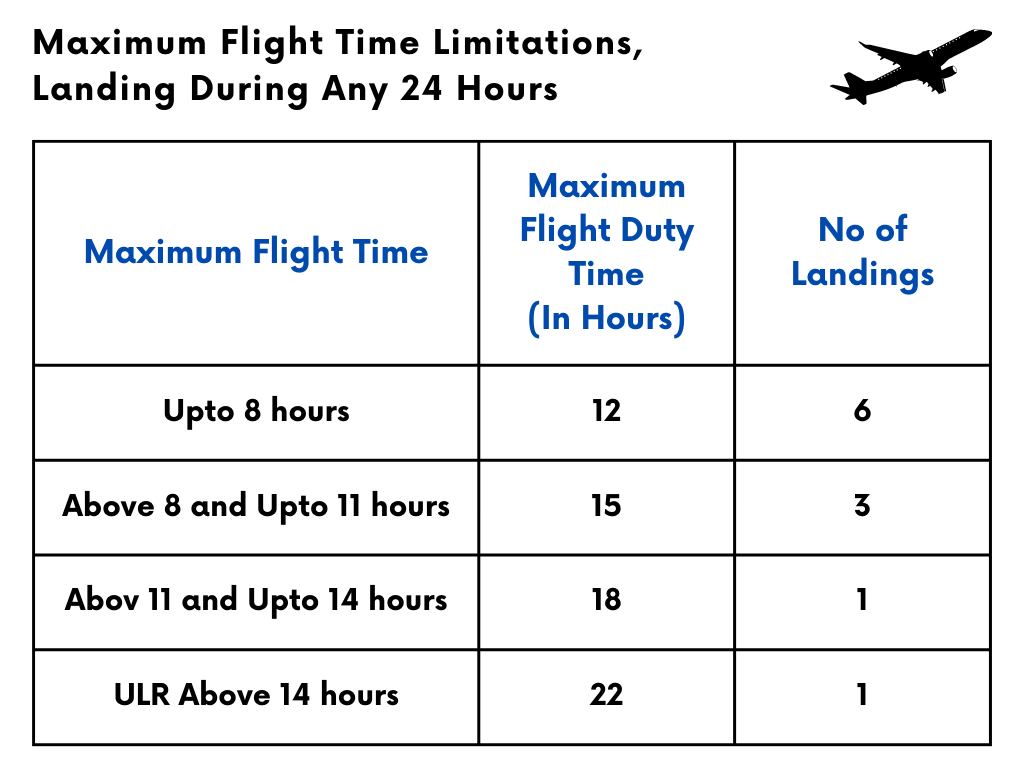
(*) For ULR operations approvals to be sought from DGCA on case-to-case basis for specific city pairs and the departure windows of the flights.
When the FDP starts in the WOCL, the maximum FDP stated in the Table shall be reduced by 100% of its encroachment upto a maximumof 2 hours. When the FDP ends in or fully encompasses the WOCL, the maximum FDP stated in the table shall be reduced by 50% of its encroachment.
Maximum Cumulative Flight Time Limitations
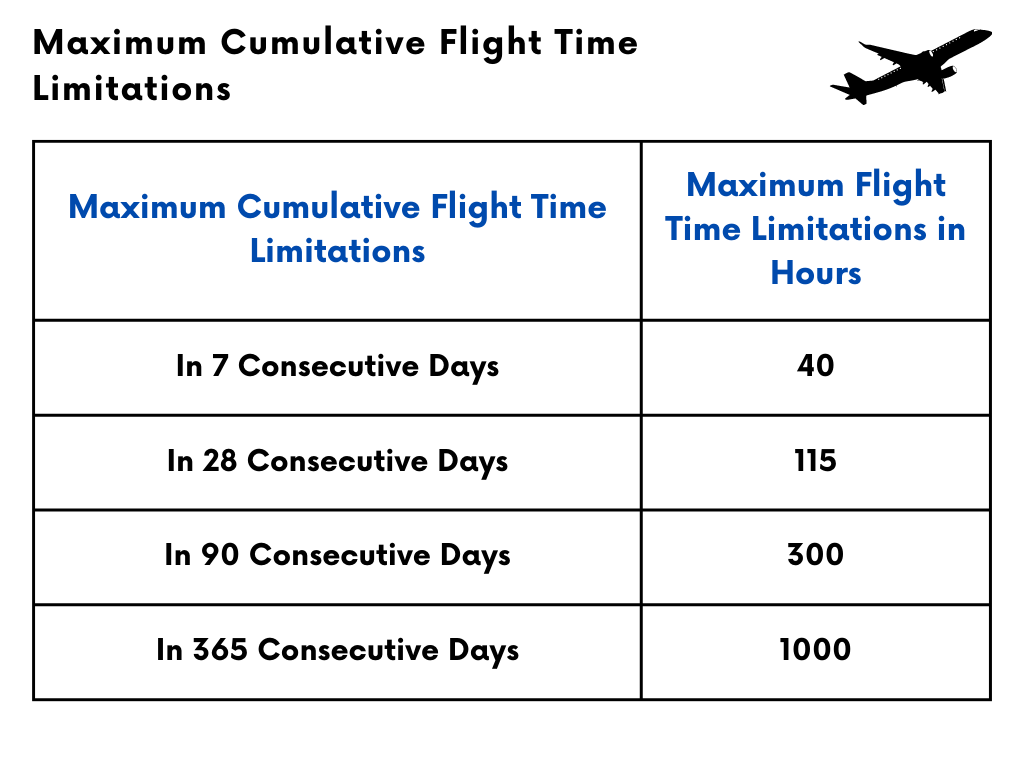
Maximum Cumulative Duty Period
No operator shall assign and no cabin crew member shall accept any duty to exceed:
- 210 duty hours in any 28 consecutive days, spread as evenly as practicable throughout this duty period;
- 65 duty hours in any 7 consecutive days.
Split Duty
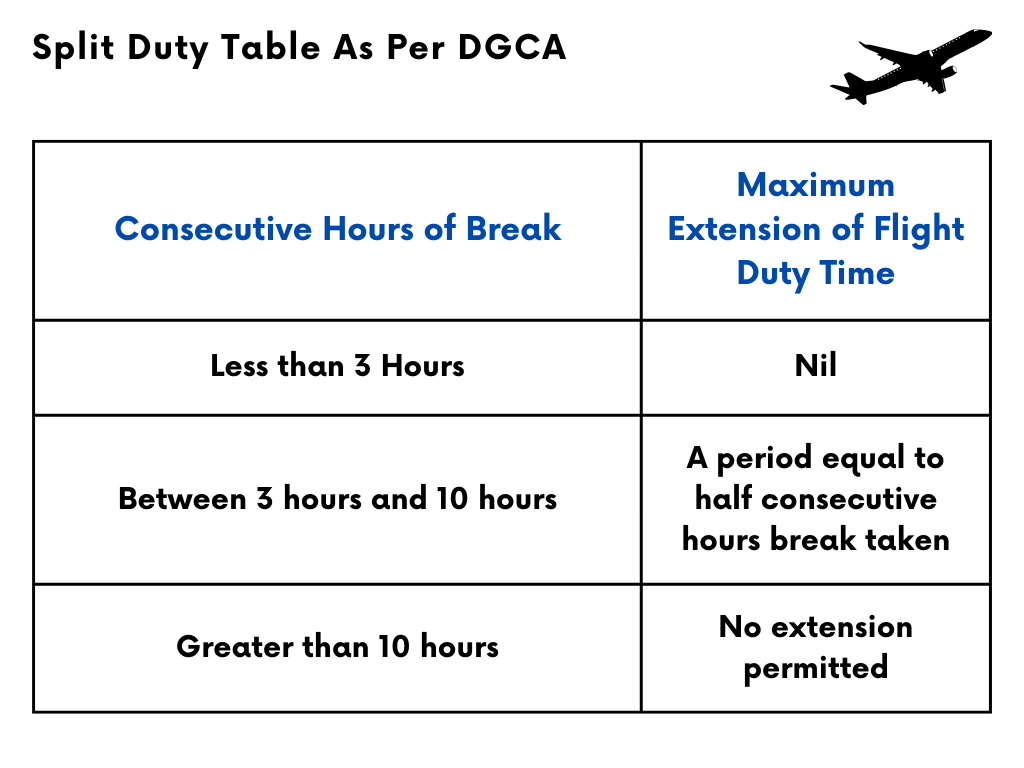
- Post-flight and Pre-flight duties will not be counted as part of rest.
- If the break is more than 6 consecutive hours or fully encroach on the WOCL, then operator will provide suitable accommodation.
- Parts of the Flight Duty Period before and after the break shall not exceed 10 hours.
- Split duty shall only be applicable for Para 6, Sub Para 6.1.1.
Minimum Rest Periods
Rest Period (Before the flight)
The minimum rest, which must be provided before undertaking a flight duty period, shall be:
a) At least as long as the preceding duty period,
OR
b)
1. 12 hours
2. 14 hours for crossing 3 time zones upto 7 time zone
3. 36 hours for crossing 7 time zones Whichever is greater.
If the preceding duty period, which includes any time spent on positioning, exceeds 18 hours, then the ensuing rest period shall include a local night
Period of transportation to and from an airport shall neither be counted towards duty time nor rest period. The operator shall include in the ‘Scheme’ the optimum time of transportation after taking into account various factors and on ensuring that the rest period does not get reduced below the minimum rest requirements.
Weekly Rest
An operator shall ensure that the minimum weekly rest of continuous 36 hours including two local night is provided such that there shall never be more than 168 hours between the end of one weekly rest period and the start of the next.
Note 1: The operator shall provide weekly rest at home base.
Note 2: If the same is not possible due to unforeseen circumstances , the cabin crew member shall be given 12 hours’ additional rest for every 24 consecutive hours on return to home base on the first available opportunity.
Rest After Return to Homebase
Operator shall ensure that effects on cabin crew members of time zone differences will be compensated by additional rest as specified below.
Minimum rest including local nights shall be given, according to the Table given below, to any cabin crew member when coming back to home base, who has been away from the home base on flight duty in such a way that the WOCL had to be encroached.
Time Zone difference
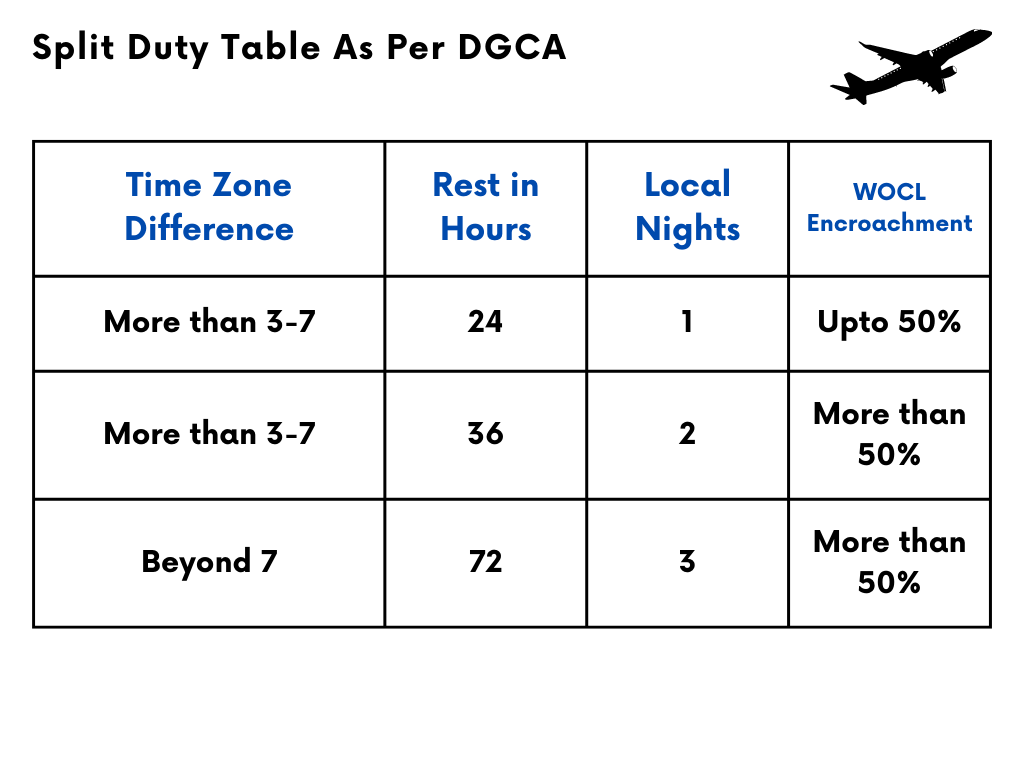
Note 1: Cabin crew, whose weekly rest is due after completion of flight duty, will be given 50% of rest in hours only (as indicated in Table above) over and above the admissible weekly rest as in 7.4 when concurrently due.
Note 2: For cabin crew operating ULR flights, additional rest of 12 hours shall be added to the Note 1.
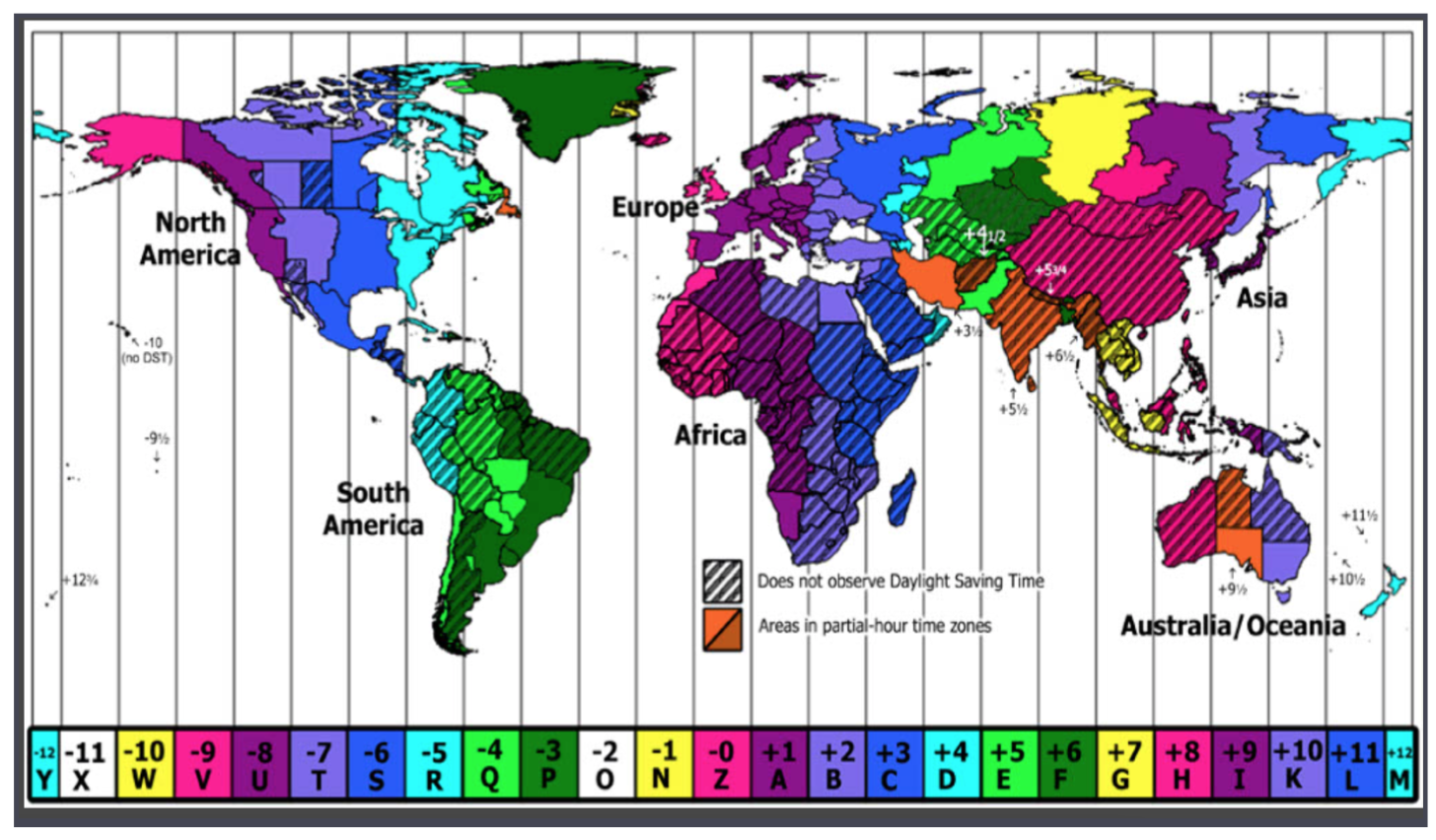
Augmentations of Cabin Crew & Inflight Rest
For continuous flight time beyond 11hrs, as indicated, the operator shall ensure that a Senior Cabin Crew is always on duty during the in-flight rest of the other Senior Cabin Crew.
For flights with flight time greater than 11 hours or flight duty period greater than 15 hours, cabin crew shall be augmented by 50% of the minimum crew requirement as mentioned.
- The minimum in-flight rest shall be not less than Flight Time minus 11 hrs.
- The conditions of rest should be such that a cabin crew member can obtain recuperative rest in a comfortable horizontal seat, or in a bunk, separated and screened from the passengers, and reasonably free from disturbance.
Augmentation of cabin crew is not applicable for unforeseen circumstances
Standby
Operators shall include ‘Standby’ as part of their regular rosters and concerned cabin crew shall be kept notified. In case of exigencies when ‘Standby’ duty may go beyond the roster; Operator shall ensure that concerned cabin crew is notified in advance.
Standby Period
Standby period shall not extend beyond 12 hours. However, a maximum standby at airport (with or without sleeping quarters) shall not exceed 8 hours.
If the standby period is at the airport and
a. Standby culminates into a flight duty then the total period (i.e. 100%) shall be counted towards the flight duty period and also towards cumulative duty period.
b. Standby does not culminate into a flight duty then the total period (i.e. 100%) shall be counted towards cumulative duty period.
If the standby period is at home or in a hotel and culminates into duty
a. Within first 6 hours then no part of standby shall be considered as part of flight duty period or cumulative duty period.
b. At 6 hours or later then flight duty period shall be reduced by 50% of the standby time.
If standby period is at home or in a hotel does not culminate into a duty then, 25% of its time shall be considered under cumulative duty.
Rest Period After Standby
When any period of standby finishes, which does not culminate into flight duty, the rest for home standby shall be 8 hours and for airport standby shall be 12 hours.
Positioning
- All the time spent on positioning on the behest of the operator shall be counted as duty.
- Positioning time should be a part of a flight duty period when it immediately precedes (i.e. without an intervening rest period) a flight duty period in which that person participates as a cabin crew member.
- Positioning after operating a flight duty period without an intervening rest period shall be counted as duty period for determining the rest period.
- Positioning should not count as an operating sector when planning or calculating a flight duty period.
Consecutive Night Operation
- Cabin crew shall neither be detailed nor undertake any flight duty between periods embracing 0000 to 0500 hours local time for two consecutive nights except once within a period of 168 hours/ 7 Consecutive Days.
- For a cabin crew member remaining less than 48 hours away from home-base/domicile time, two consecutive nights is estimated to be referred to local time at the point of first departure of flight schedule.
Unforeseen Operational Circumstances
Flight Time’, ‘Flight Duty Period’, landing may be extended due to unforeseen operational circumstances as follows:
- Flight Time by maximum of 1½ hours.
- FDP by maximum of 4 hours.
- Only one extra landing may be carried out in the event of a diversion to complete the flight.
- One additional Flight Duty between 0000 to 0500 hours in continuation to provision of Para 10 (Consecutive Night Operations) may be carried out subject to the limitations of Para 11.1 (a) or 11.1 (b) or 11.1 (c) or any combination thereof.
- The above is subject to a cumulative limit of maximum of 3 hours (Flight Time), maximum of 10 hours (FDP) and 02 landings during any period of 28 consecutive days.
- Whenever the Flight duty period or flight time gets extended, the rest period shall be pro-rata increased by twice the amount of extended time of Flight duty period.
Note: The Senior Cabin crew in consultation with all the cabin crew members will convey their willingness (or consent) to the PIC for operating the flight.
Reserve
If an operator assigns cabin crew members to reserve, the following requirements shall apply in accordance with the certification specifications applicable to the type of operation:
- Reserve shall be published in the planned roster.
- Shall neither be counted towards duty time nor rest period.
- FDTL schemes shall specify the following elements:
a. Maximum duration of any single reserve period.
b. Number of consecutive reserve days that may be assigned to a cabin crew member.
Maintenance of Records And Monitoring System Records
Records shall be kept for 18 months of the duties performed and the rest periods provided so as to facilitate inspection by the operator’s authorized personnel and surveillance/audit by DGCA officers. The records may be made available to cabin crew on request.
The Operator should ensure that these records include for each cabin crew member, at least:
- Start, duration and end of each flight duty period.
- Start, duration and end of each duty period.
- Rest periods.
- Flight time.
- Cumulative flight time as per Para 6.2 of this CAR.
The operator shall also keep records of occasions when flight time and duty were extended as per CAR.
If discretion was used for similar reasons on more than 20% of occasions when a particular route or a route pattern is flown, then the operator shall review and change the schedule or the crew scheduling arrangements so as to reduce the frequency at which such events occur.
In addition, DGCA may require submission of copies and analysis of records in the manner deemed fit.
Above maybe achieved through a fool proof transparent computerized system. The operator shall evolve a system so that only designated officers of the operator have access to the system. Further, the system shall have a provision of audit trail so that any change made in the data may be tracked down to its source.
The operator through the computerized system shall ensure that the cabin crew member is well within the flight time, flight duty period, duty period and rest period requirements before permitting him to operate a flight.
Happy flying and Happy Learning!